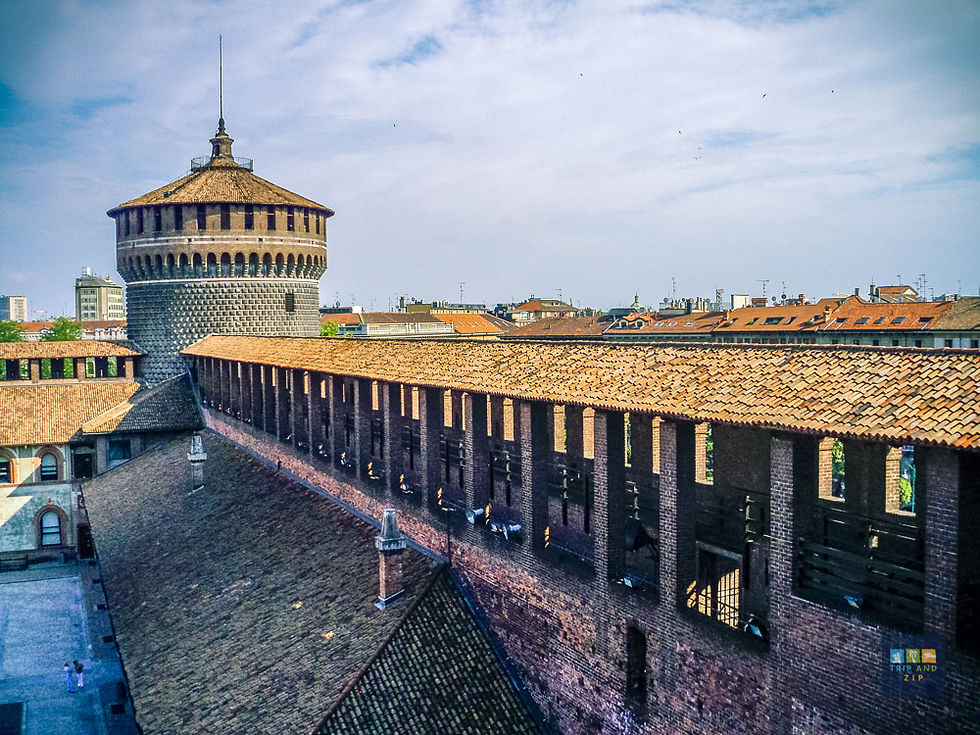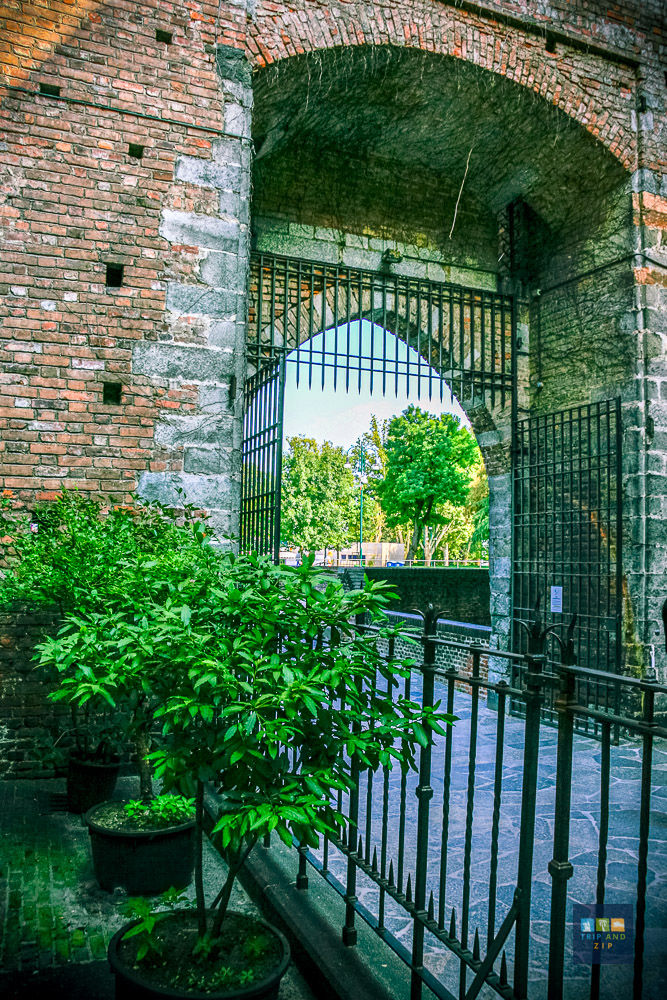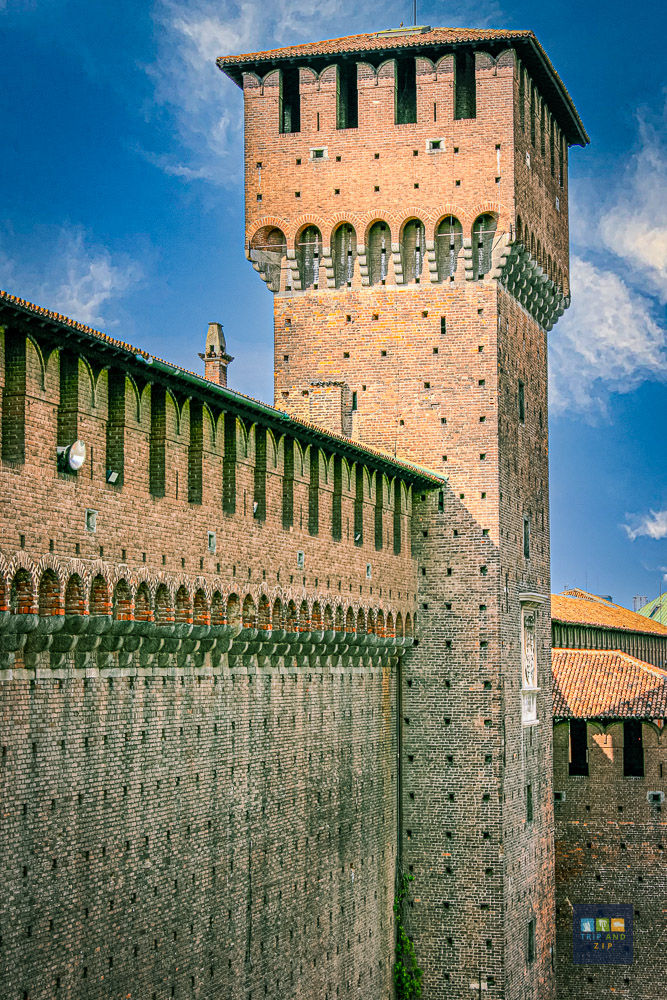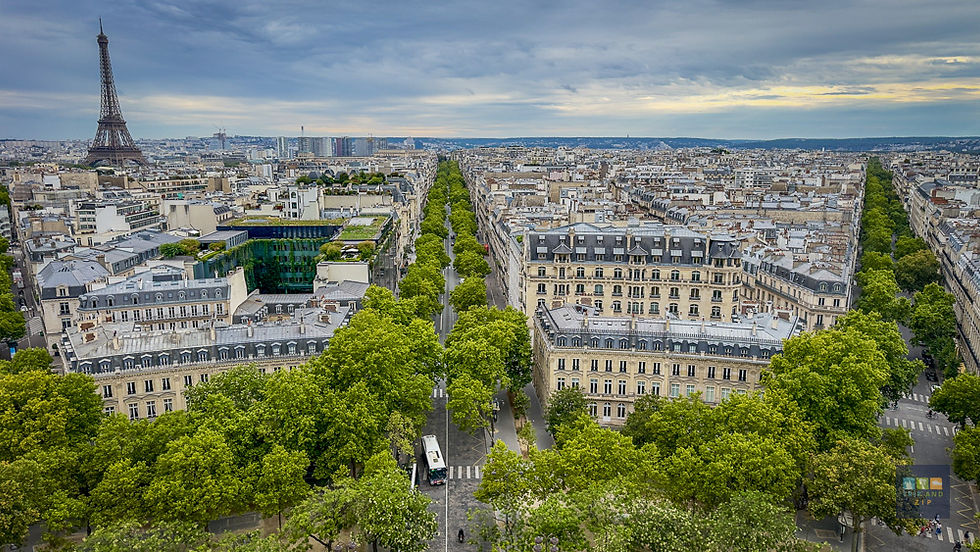Sforza Castle: Milan’s Fortress of Power, Art, and History
- Trip And Zip

- Jul 11, 2009
- 3 min read
Sforza Castle, or Castello Sforzesco, is one of Milan’s most iconic landmarks, a fortress that has stood the test of time, witnessing centuries of history, power struggles, and artistic brilliance. Located in the heart of the city, this imposing red-brick structure is more than just a castle—it is a symbol of Milan’s resilience and cultural richness.


Originally built in the 14th century by the Visconti family, the rulers of Milan at the time, the castle was almost completely destroyed when the Ambrosian Republic briefly took control of the city. However, in 1450, Francesco Sforza, who had recently taken power as Duke of Milan, restored and expanded the fortress, turning it into one of the grandest residences of the Renaissance. Under his leadership, the castle transformed from a military stronghold into a refined ducal palace, attracting some of the greatest minds of the time.


The Sforza family left a lasting legacy, not only in politics but also in the arts. Francesco’s son, Ludovico Sforza, known as "Il Moro," played a significant role in Milan’s artistic and cultural development. He invited Leonardo da Vinci and Donato Bramante to contribute to the castle’s decoration, commissioning frescoes, architectural designs, and even military engineering improvements. Leonardo’s genius is still visible today in remnants of his frescoes and the famous Sala delle Asse, a chamber adorned with an intricate tree canopy design believed to be his work.



Despite the Sforza family's ambitions, their rule was short-lived. By the early 16th century, Milan fell under French control, and the castle’s days as a noble residence came to an end. Over the following centuries, the fortress was occupied by various foreign powers, including the Spanish, Austrians, and Napoleonic forces. It served as military barracks, a prison, and even a defensive stronghold, suffering extensive damage in the process. By the 19th century, its condition had deteriorated significantly, and there were even discussions about demolishing it altogether. However, early 20th-century restoration efforts gave the castle a second life, preserving its historical and artistic importance.


Today, Sforza Castle is one of Milan’s most significant cultural sites, home to several museums that showcase the city’s artistic heritage. Among the most treasured pieces is Michelangelo’s Rondanini Pietà, an unfinished marble sculpture that represents the artist’s final work. The castle also houses impressive collections of Renaissance paintings, ancient artifacts, and even Egyptian relics. While walking through its vast courtyards and grand halls, visitors can sense the layers of history embedded in its walls, from medieval warfare to Renaissance splendor.



Beyond its artistic treasures, the castle itself is a masterpiece of military and Renaissance architecture. Its massive towers, fortified walls, and elegant courtyards reflect both its defensive function and its role as a ducal residence. The Filarete Tower, rebuilt in the early 20th century, serves as a majestic entrance, leading visitors into a world where history and art intertwine. Whether exploring its museums, admiring its design, or simply wandering through its historic grounds, Sforza Castle offers a glimpse into Milan’s past, a story of power, ambition, and cultural brilliance that continues to captivate visitors today.







Comments